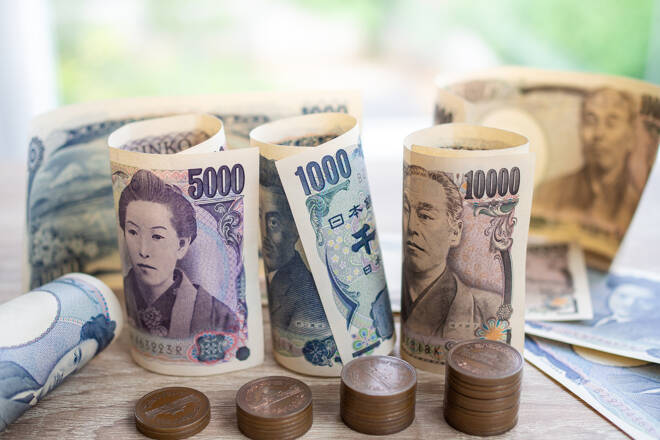Advertisement
Advertisement
USD/JPY Forecast: Bank of Japan Chatter and the US Economy in Focus
By:
Short-term USD/JPY forecast relies on Bank of Japan's moves. Strong US economy may reshape Q1 2024 Fed rate cut expectations.
Highlights
- The USD/JPY declined by 0.19% on Wednesday, ending the session at 143.599.
- Rising bets on a Q1 2024 Fed rate cut pulled back 10-year Treasury yields and the USD/JPY.
- On Thursday, the Bank of Japan and the US economic calendar are the focal points.
USD/JPY Movements on Wednesday
The USD/JPY declined by 0.19% on Wednesday. After a 0.75% rally on Tuesday, the USD/JPY ended the Wednesday session at 143.599. The USD/JPY rose to a high of 144.098 before falling to a low of 143.261.
Bank of Japan and Policy Uncertainty in the Spotlight
On Thursday, the Bank of Japan will remain in focus. Uncertainty about the plans to pivot from negative rates exposes the USD/JPY to BoJ commentary. Significantly, the BoJ has remained silent since the Tuesday monetary policy decision to leave rates in negative territory.
Forward guidance on policy goals would move the dial. Economists expect the Bank of Japan to pivot from negative rates. However, the markets remain divided on the timing of a move away from ultra-loose monetary policy. The silence suggests the BoJ will leave monetary policy unchanged in January and possibly Q1 2024.
On December 15, a Reuters Poll showed that 80% of economists expect the BoJ to exit negative rates in 2024. Only 20% bet on a January pivot from negative rates.
US Jobless Claims, Philly Fed Manufacturing, and GDP Numbers in Focus
On Thursday, the US economy will be in the spotlight. Q3 GDP, Philly Fed Manufacturing, and jobless claims will draw investor interest. Barring a marked revision from preliminary GDP numbers, jobless claims and the manufacturing data could have more impact.
The US manufacturing sector accounts for less than 30% of the US economy. However, a slump in manufacturing sector activity could ignite fears of a hard landing. US jobless claims will influence market bets on a Q1 2024 Fed rate cut.
Tight labor market conditions support wage growth and disposable income. An upward trend in disposable income could fuel consumer spending and demand-driven inflation. The Fed would need to recalibrate its interest rate trajectory to curb consumer spending. A pullback in consumer spending would dampen demand-driven inflation.
Economists forecast the Philly Fed Manufacturing Index to increase from -5.9 to -3.0 in December. Significantly, economists predict initial jobless claims to rise from 202k to 215k in the week ending December 16.
Short-term Forecast
Near-term USD/JPY trends remain hinged on the Bank of Japan and the US Personal Consumption Expenditures Report, out on Friday. The markets expect a BoJ pivot from negative rates in 2024. However, a robust US economy could temper bets on a Q1 2024 Fed rate cut and drive demand for the USD/JPY.
USD/JPY Price Action
Daily Chart
The USD/JPY sat below the 50-day and 200-day EMAs, sending bearish price signals.
A USD/JPY break above the 200-day EMA would support a move to the 144.713 resistance level.
On Thursday, the Bank of Japan and the US economic calendar could influence buyer demand.
However, a drop below the 143 handle would bring the 142.177 support level into play.
The 14-day RSI at 38.09 suggests a USD/JPY fall to the 142.177 support level before entering oversold territory.
4-Hourly Chart
The USD/JPY hovered below the 50-day and 200-day EMAs, reaffirming bearish price signals.
A USD/JPY break above the 50-day EMA would give the bulls a run at the 144.713 resistance level.
However, a fall through the 143 handle would bring the 142.177 support level into play.
The 14-period 4-hour RSI at 49.70 suggests a USD/JPY fall to the 142.177 support level before entering oversold territory.
About the Author
Bob Masonauthor
With over 28 years of experience in the financial industry, Bob has worked with various global rating agencies and multinational banks. Currently he is covering currencies, commodities, alternative asset classes and global equities, focusing mostly on European and Asian markets.
Did you find this article useful?
Latest news and analysis
Advertisement
